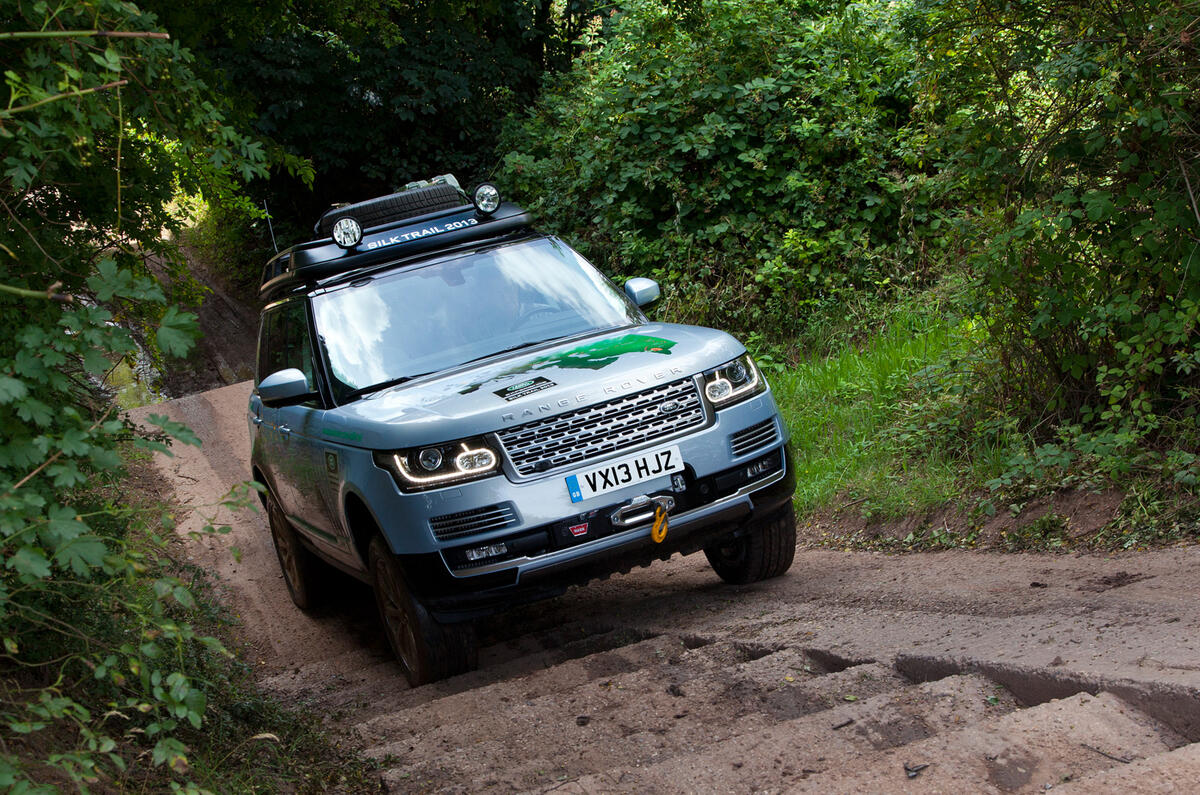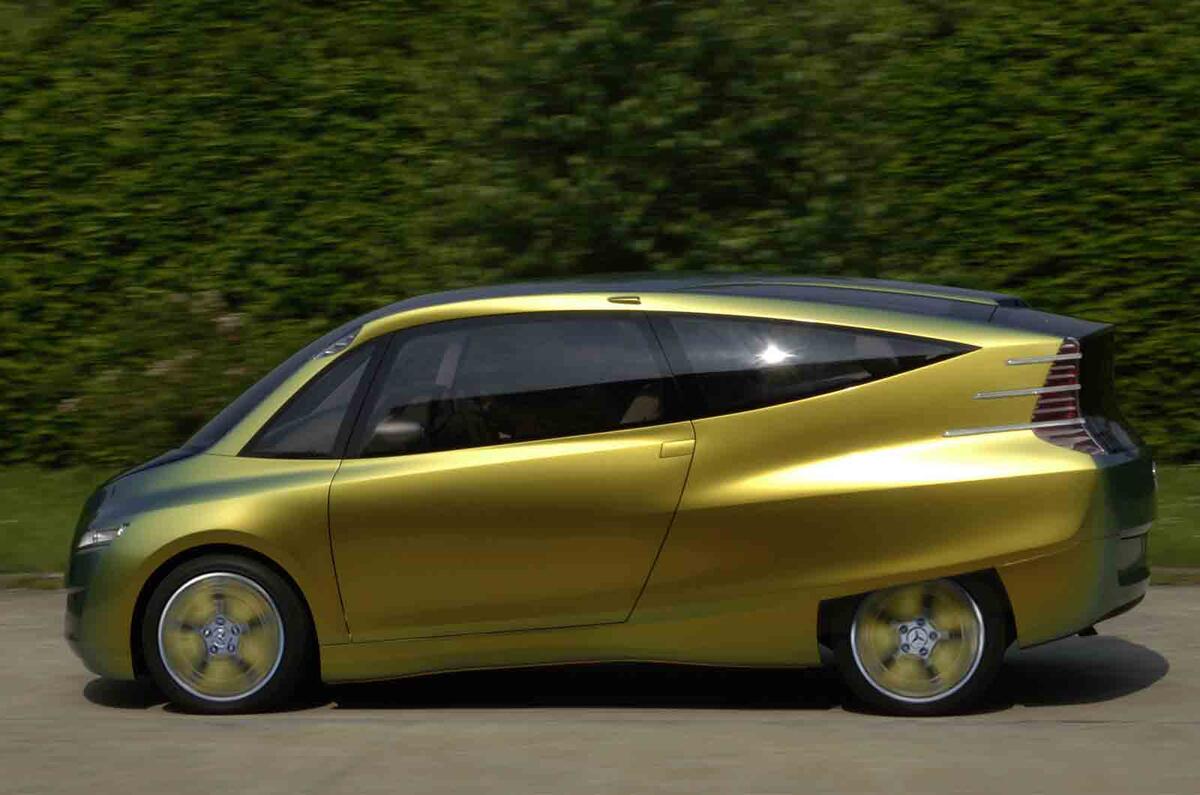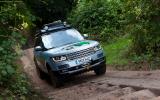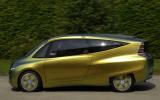Jaguar Land Rover is studying ancient wall constructions and the structure of trees in its quest to find new ways to save weight.
R&D boss Dr Wolfgang Epple believes that there are lots of aspects of nature and non-automotive engineering that can be drawn upon for the development of more efficient structures. "Cars have been developed for just over 100 years, but nature has been evolving over millions of years," he says.
Epple cites the wall construction methods used on some centuries-old English buildings as an interesting structural study. The walls of these homes are constructed from wood, straw, mud and other materials, and have inspired investigations into reducing the mass of alloy engine blocks, which may eventually feature weight-saving voids of the sort found in these buildings.
Speaking at a media dinner, Epple said that his research and development team were also intrigued by the structure of trees, noting the substantial difference in weight carried by branches in summer when the tree has leafed, and in winter when it is bare.
More conventionally, Epple also revealed that JLR is investigating composite reinforcement for its aluminum body structures, methods of making engines more compact, improving the fuel-injection systems of its gasoline engines to enhance economy, reducing the friction in gearboxes and finding ways to harness more of the energy lost to the car’s exhaust and cooling systems. Epple believes that plenty of development potential remains in the internal combustion engine.
Applying nano technology to batteries is another research avenue for potential efficiency improvements that might benefit Land Rover’s hybrid model programme, which includes the Range Rover Hybrid.
Epple’s research studies operate in a time frame between three-and-a-half and ten years into the future, so we can expect to see a number of these enhancements appearing in the medium-term. Much of this forward research will be carried out at the new National Automotive Innovation Campus to be built on the Warwick University campus in 2014, where JLR will eventually house its R&D team.
JLR needs to compensate for its small size when compared with its Audi, BMW and Mercedes rivals, says Epple, and working in tandem with universities is one way of doing this. JLR is not alone in studying nature to improve its cars – Mercedes produced a 2005 aerodynamic design concept called the Bionic that was closely modelled on the tropical yellow boxfish.







Join the debate
Add your comment
its a thought
Its a good thought to use alliances with Uni's to tap into young fresh talent but that's at the expense of the length of industry experience the individual might have, which might be 0. If jag can do an alliance with Lotus Engineering or Williams F1 or Yamaha alongside Uni's or any other small specialist engineering firm. Engine development can be done with help from Perkins Engines or Yamaha (petrol engines). If they follow such a route then it will pay dividends but this R&D needs to be quick and thinking 5 years ahead not just for now. the more they wait the stricter the EU regulations will become.
Some may argue that Jag needs to stand on its feet itself rather than alliances but every business strategy has its risks. Jag can either pump billions which it does not have into a vast employment plan risking a heavy dent in balance sheet or alliances like these mentioned above which are less risky and can yield a lot of help in R&D.
Move to Electric
This is partly because the firms are run by mechanical engineers whose careers have been built on perfecting internal combustion engines - to whom the thought of these beautiful designs becoming obsolete overnight is unthinkable. Not to mention the huge accounting writeoffs that would ensue if nobody wanted ICE powered vehicles.
How do you tell a senior, well remunerated engine designer - whose career is built on the ICE - that his skills are no longer needed? The internal resistance within these organisations will be huge. Nobody has got close to Tesla in terms of electric performance and range, but I'm afraid this is where the future lies. Any car company that continues piling investment into the internal combustion engine is heading into a cul-de-sac, and handing an ever-increasing technological lead to Tesla.
paddyb wrote:My fear is that
To a certain extent I agree, but until a manufacturer can actually produce something the size and price of a Focus/Astra/Golf and with non of the compromises an EV poses, the ICE will be king and around for a long time yet...
Citytiger wrote:To a certain
Citytiger, I fear your opinion is the perceived wisdom among most in the auto industry.
The danger lies in entrenched complacency among many in the industry, who are going to be caught completely off-guard when the technology reaches 'tipping point'. The Nissan Leaf and the BMW i3 are to a certain extent 'joke' cars, with very limited range. But the Tesla S isn't, and the cost of batteries is falling as dramatically as their capacity is rising.
I'd urge you Google 'ABB conversations tipping point' - you'll find a very interesting recent article from ABB, which has a vested interest in electric vehicles but makes some serious points which should worry car makers.
paddyb wrote: The danger lies
paddyb, simple question, can you get in a Tesla, or any other ev, hitch up a caravan as millions do and then proceed on a continental holiday, perhaps driving from the midlands, down to Dover, jumping on a cross channel ferry and then drive down to the south of France, in a word "NO". Not without careful planning and stoppages on route to recharge, you can do that in a humble Dacia, the only genuine way forward in my opinion is hybrid.
EV's will always be limited by the charging factor, they are just not convenient enough, or available "whenever" you require them, especially in case of an emergency, you cant put off that dash to the hospital because you are charging your battery, and that is what puts many people off them, now more so with rising energy bills, everyday we hear of people who have to choose between eating or heating, with an ev, its eating, heating or charging.. Until you can pick up an EV for a couple of hundred pounds and run it for a few quid a week, ICE will remain on top, and who will trust a 10-15 year old, 3rd or 4th hand EV with a patchy service history?
Darren Moss wrote: Jaguar
Meanwhile, the Germans are looking at more conventional weight reduction techniques. Some may say this makes them boring, but these more conventional methods work. Simple.
JLR's failure to make a car much lighter despite the extensive use of aluminium is alarming, but taking inspiration from brick walls and trees just proves that they don't know what they're doing.